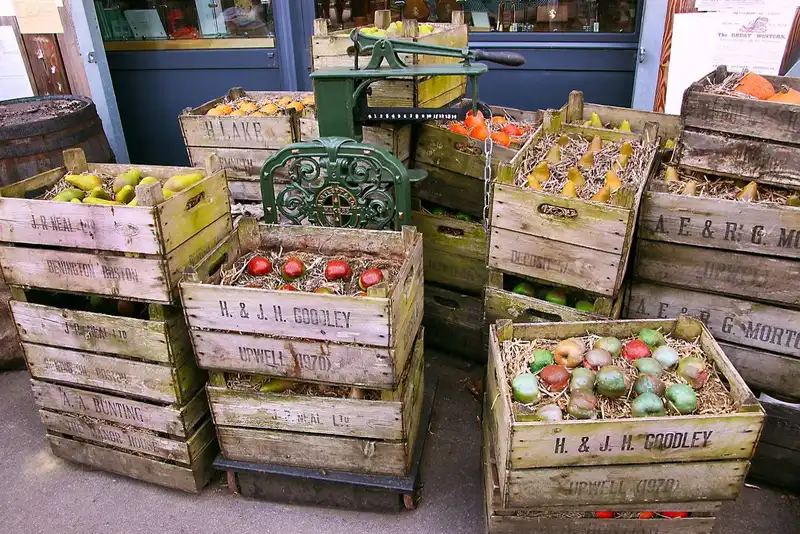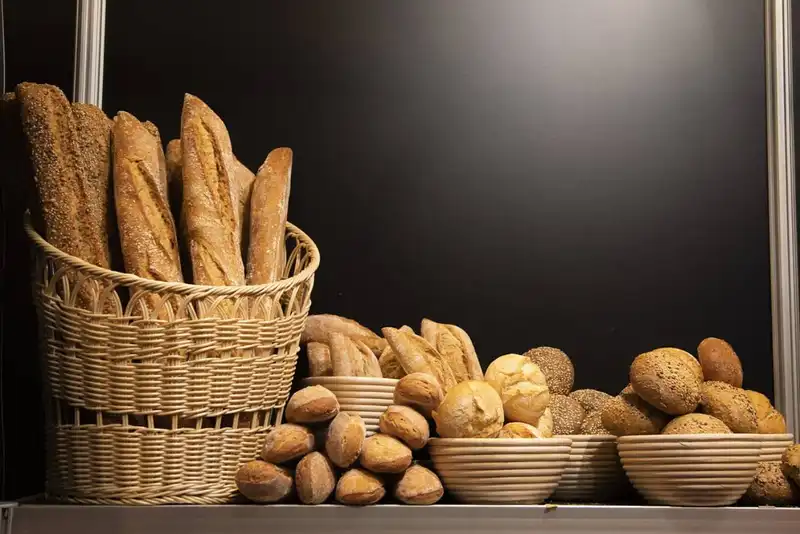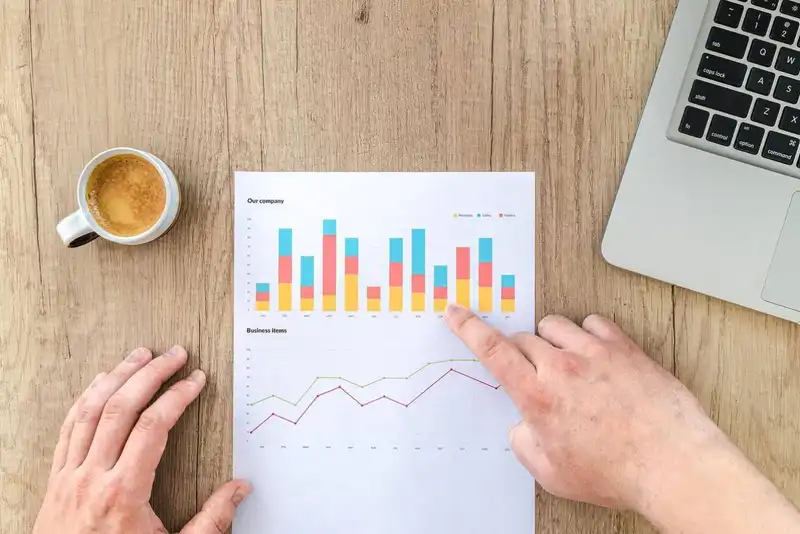What is supply chain forecasting?
Supply chain forecasting is the process of estimating future demand for a company's products or services. The goal of supply chain forecasting is to improve the efficiency of production and distribution planning. Companies use a variety of methods to forecast demand, including statistical modeling, market research, and customer surveys.
How To Improve Your QSR Profits With Supply Chain Forecasting
What is Supply Chain Forecasting?

In February 2018, KFC -- the second-largest multi-chain restaurant in the world (the first being McDonald's) -- had a major problem in the U.K. The problem forced it to close over half its 900 UK outlets. The ones that stayed open either ran on a limited menu, or reduced hours of operation.
The issue? KFC had run out of chicken in the region. This happened because of a delivery snag caused by a change in the company's third-party logistics operations. KFC had brought the international logistics behemoth DHL on board to replace Bidvest Logistics, the food specialist logistics company it had initially partnered with. However, DHL had only one location servicing the region. Bidvest had six.
Despite its attempts at deflective humor ("The chicken crossed the road, just not to our restaurants," its messaging went), KFC's share prices took a dive, and its customers were irate.
In 2018 such teething troubles seldom happened, especially to a business as big as KFC, with its vigorous inventory management system. Unfortunately, in 2022, such rare logistical snafus have become the norm. Restaurants are overwhelmed, thanks to a host of problems that include the pandemic, frequent geopolitical conflicts, inflation, and the continual tightening of federal regulations across states.
What restaurants need is an ironclad supply chain forecasting system. But what is supply chain forecasting? It's one of the most important aspects of supply chain management, which is the management of goods, data, and finance of a product or service from soil to sale -- that is, from procuring raw material, to delivering it to the end of the line.
Supply chain forecasting allows a business to understand how much product it will need in the foreseeable future. It helps in demand forecasting and planning. Historical data can provide vital information about how much product has been ordered by a company, and using past results, predict its needs in the future. Most importantly, forecasting supply chain problems can help businesses plan for unexpected disruptions because they know what to expect daily. For as we learnt from the KFC incident, things don't always go according to plan.
Challenges Affecting the QSR Supply Chain Today

The food and beverage industry has grown tremendously in the past few decades. Technological advancements, transparency, and better traceability have all led to the development of robust supply chains. While this is good for business, it involves the participation of more parties in the whole supply chain system. It also means that supply chain management will become more complex, confusing even, as everything is now interlinked. Monitoring each part of your supply chain can be difficult and stressful.
Supply chains form the foundation of a restaurant business. They are also one of the most sensitive links in the foodservice system. Even one delayed shipment could lead to major setbacks. Vulnerable as supply chains always have been, they became even more fragile after the Covid pandemic, which forced mass quarantine and disrupted supply chain systems locally and globally. After more than two years of continuous bottlenecks, it was hoped that supply chain issues would improve in 2022, but they continue to be a sore point. Here are some ongoing problems-
- High demand, escalated shipping-container prices, clogged ports, increased fuel prices, and labor shortage in the supply chain management system, all contribute to the supply crunch. As a result, food costs have increased, and shortages of main ingredients like chicken and corn have been reported. The International Monetary Fund reported that shipments were delayed by nearly three weeks at the Port of Los Angeles, early 2022. Other U.S. ports witnessed significant delays, too.
- A dip in coronavirus infections meant that more franchised Quick Service Restaurants (QSR), fast-casual, and full-service restaurants started reopening to full capacity. But the disrupted supply chain posed a serious challenge to operators. Hostilities in Eastern Europe on account of the Ukraine War put further pressure on supplies. It did this by disrupting the agricultural sector and halting the crucial import of fertilizer and energy resources required to run food supply chains and the agricultural sector efficiently.
- Trade sanctions, the destruction of infrastructure, and a mounting refugee crisis have added to the bottlenecks.
- In February 2022, a Forbes report indicated that the supply chain crunch prevented restaurants from receiving replacement parts, new cooking equipment and heating, ventilation, and air conditioning (HVAC) units on time. As a result, the lead time to procure these products increased.
- The continued demand for takeout has led to a shortage of items like coffee cups, disposable straws, and to-go containers. The market research firm NPD Group reported that takeout orders increased 20% in September 2021, compared to the same period in 2019.
Not knowing how much product to order can lead to lost sales and profits.
To avoid this problem, you need to use forecasting tools to predict customer demand.
Advantages of Supply Chain Forecasting

Methodical supply chain planning helps businesses weather disruptions, manage adverse situations, and flourish. Here are five advantages ofsupply chain forecasting-
- Improves Decision-making- By understanding and forecasting your supply, your procurement team will be able to make better decisions for the business. It will determine how often you order products, how much of each product you should have in stock, and what items are most important to keep in stock at all times.
- Helps in Demand Planning- By analyzing previous data sets, supply chain forecasting meets consumer demands efficiently by delegating resources, ordering in time, and maintaining the right stock level to meet needs. An accurate future demand forecast can help a company avoid stockouts, optimize inventory levels, and improve customer satisfaction.
- Better Lead Time Planning- Knowing lead time is the most important factor in maintaining a healthy business. Your customers -- whether individuals or businesses -- want to know when their order will arrive and what shipping method you'll use. Knowing the time it takes from port to plate is crucial because it sets the expectations for your customers and helps you improve your business.
- Helps Utilize Finances Better- When you have confidence in your forecasting, you can reduce your safety stock and general inventory levels. This will make your supply chain more efficient because it allows you to delay purchases, which means you can better use the finances to expand or diversify your business.
- Improved Inventory Control- Your inventory is one of your business's biggest and most vulnerable assets. Too much cash tied up in inventory can hurt your business, while lacking the stock you need to fulfil orders can altogether kill your business. The middle ground is to manage it well through demand planning. A supply chain forecasting tool can help you implement the 'just in time delivery' model, which means you will receive your products from suppliers just when you have to deliver them. It helps in keeping your inventory under control without over- or under-stocking.
Different Supply Forecasting Methods

Forecasting demand depends on a company's business needs; there is no one-size-fits-all forecasting solution. Various forecasting methods can be used and modified by customizing them for a specific industry or business.
Consulting with an expert and assessing your business needs will provide better insights on how to appropriately fit a forecasting method into your supply chain management operations. However, broadly, the three types of forecasting methods are trend analysis, regression analysis, and time series analysis. Here's a closer look at each one. . .
- Trend analysis predicts purchase trends by determining what customers buy and how much they're willing to pay for that commodity in the future. It is based on the idea that you collect data about the products you sell, monitor their movements over a specified period, and compare them with the current movements of your products to see how they may fluctuate over time. An important aspect of trend analysis is knowing if you should initiate a new trend, like introduce a new product, or continue with an existing one.
- If you have been running a business for a while, it's easy to lose sight of how your business measures up to competitors. Sometimes, it can be hard to know whether or not your actions are out of the ordinary. Fortunately, regression analysis can give you a predictive view of how growing (or stagnating) sales will affect business revenue as per your sales process and customer lifecycle. Regression analysis looks at all the sales numbers, either in aggregate or separately, and produces a summary of how things are currently trending. Once a trend line is established, this data is a great way to predict whether or not the current strategy will continue to perform at the same level over time.
- Time series analysis is one of the most commonly applied forecasting techniques in business, finance, supply chain planning, inventory management, and production. This method forecasts or predicts the future value of a business over a period of time. It entails developing solutions based on past data and utilizing them for future strategic decisions. The future is forecast based on everything that has already happened.
Why is Forecasting Software Your Best Bet

When KFC faced its supply chain crisis in 2018, it was perhaps because of a lack of communication with its new logistics partner. One wonders if the multi-chain restaurant couldn't predict the number of orders that would come in during its transition to a new logistics partner. Was no data-backed forecast done?
A couple of years down the line, the situation is more dire than ever. The Covid-19 pandemic and global wars have reminded us of the importance of planning for the future. However, disruptions are a reality in the unpredictable world we live in. 2022 still has the potential to spring surprises -- with a global recession leading the ranks, and another possible global emergency with the threat of monkeypox looming large.
When the supply chain fails, seemingly small problems can have huge ramifications. At the very least, products will be in short supply; worst-case scenario -- your business can come to a standstill.
Fortunately, the market is flooded with a host of cloud-based software solutions that can help make your entire workflow flexible and resilient. For instance, a demand forecasting solution can help a business prepare and weather operational upheaval. They may not be cheap, but as far as long term investments go, supply chain forecasting solutions are vital.
Poor forecasting can lead to lost profits for your quick service restaurant.
You need to be proactive in your forecasting to ensure that you are not caught off-guard by changes in the market.
Top 3 Supply Forecasting Software Solutions for QSRs

1. Zip Ordering and Zip Forecast-
Zip Ordering reduces ordering errors through its automatic creation of custom-order guides. It imports your supply chain data and instantly connects you with suppliers that you already do business with. This helps to keep vital information up-to-date and on hand whenever you need to reference it. It also enables the combining of multiple, separate orders from different suppliers into a single, consolidated purchase order. This saves time and effort by eliminating the need to create multiple purchase orders with each supplier individually.
Zip Forecast, on the other hand, is a powerful sales forecast and demand planning software solution that makes product and service scheduling efficient at every level. The cloud-based forecast solution is designed to work directly in conjunction with a restaurant's point-of-sale solution, workforce scheduling, and inventory management software in real time.
For instance, when Zip Forecast is integrated with your point of sale system, it generates accurate sales forecasts with a single click. These reports can be generated every 15 minutes. This solution makes your business more predictable. When integrated with Zip Inventory or Zip Ordering, it helps users make smarter decisions related to inventory by improving their sales forecast accuracy. And when used with Zip Schedules, these reliable sales forecasting processes help you manage workforce scheduling to avoid over- or under-scheduling employees.
2. Tenzo-
Tenzo is assembled for mobile devices, so no matter where the user is -- on the beach or in transit -- they can see how the app brings a fresh analytics-based perspective to the business. The software's advanced AI system sends continuous notifications to users to keep them abreast of any changes or alterations they might have missed during their last online visit. In addition, this sales forecasting software predicts exactly what's ahead for any company. Its machine learning capabilities enables it to accurately inform customers of coming trends, based on historical sales data and local weather, holidays, and custom events. It gives its users detailed hourly, daily, and item-based forecasts for the coming week or month.
3. Oracle-
Oracle's Restaurant Supply Chain Management Solution monitors business KPIs to detect changes in market conditions and assess them to increase profits. The software tracks key supply chain metrics, such as food costs and inventory, then uses an AI algorithm to predict accurate demand. It analyzes and assigns demand to solidify value chains by combining internal, customer, and marketing signals that create a holistic market view. By dynamically segmenting data, the solution takes action by managing variability within short cycles so it can integrate seamlessly with your customers' needs.
This supply chain management solution enhances planning with built-in intelligence that efficiently evaluates irregularities and anomalies. For example, it analyzes price changes, holidays, and seasonality to improve plan accuracy so that the forecast is on target.
How to Choose the Software You Need
It seems simple, but forecasting and demand planning are not easy. It requires serious number-crunching to produce an accurate model for future sales, but it's not enough.
The most successful operators and business owners use a combination of number-crunching and a forecasting application to obtain accurate results.
A powerful forecasting system must be easy to use, detailed, should be able to integrate with other food and labor planning applications, and should accommodate the metrics that are most important to the operator. In addition, forecasting software provides the roadmap to ultimate efficiency; thus, it is imperative to look for one with multiple features, customization tools, and a robust customer service.
You're not making as much money as you could be.
Quick service restaurants need to pay close attention to their supply chains and forecast accordingly if they want a healthy turnover.



